Botanical Illustration Workshop drawing leaves
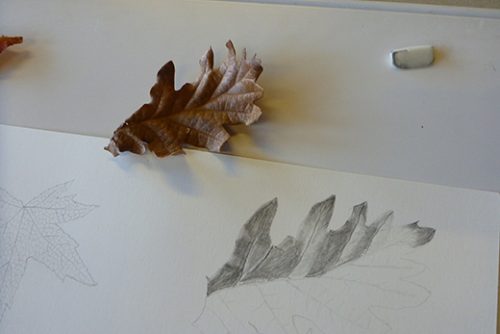
When I ask Hereford Botanical Art society what they would like to learn, they suggest basic drawing skills. They ask for autumn leaves to be the subject matter. I relish the challenge! Collecting autumn leaves of every shape and size, I set up the workshop. (Here’s a link to blogs on other workshops I’ve taught.)
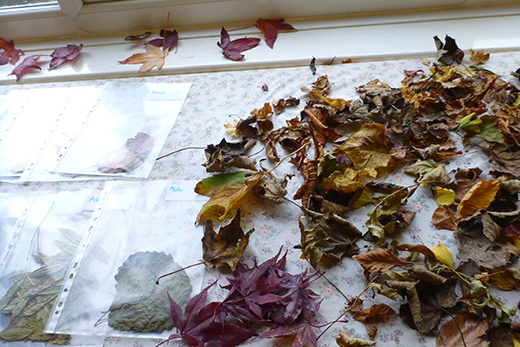
Variety of autumn leaves; both flat and curled, and of 12 different species.
Drawing Excersizes and Inspiration
Drawing skills are vital, they lie at the root of all illustration. I was keen to get the group to look and draw what they see instead of what they assume is there. The excersizes I use are loosely based on Drawing on the Right Side of the Brain by Betty Edwards. These help focus concentration, and allow people to see and create a drawing without pre-conceptions.
First is a contour drawing. The group draws a leaf without removing their pencils from the page. They feel their way across the subject as they look and draw it. Some members didn’t like this as they’re used to measuring drawings and taking far longer, but they all took part.
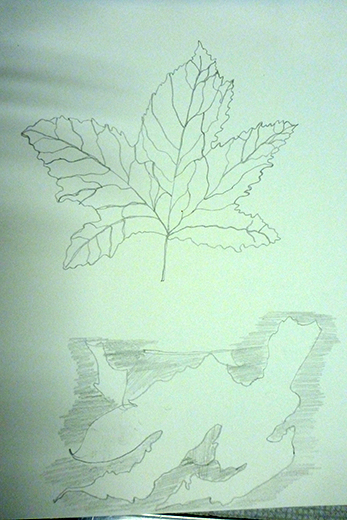
Contour drawing of sycamore leaf (Negative space study below)
Negative space
Next I do a demo of drawing negative space. You draw the shapes around and between objects instead of the object itself. The boldness and clarity of line shown in these drawings is gratifying; they were concentrating so hard they forgot to worry about what their picture looked like. Ideal.
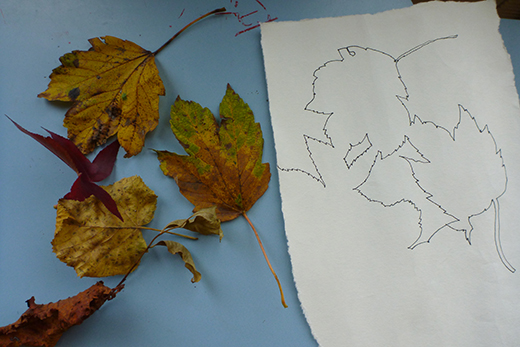
Negative space demo
It was wonderful to hear them explain that funny feeling when your brain is busy trying to draw the spaces, and another part is simultaneously trying to over-ride this and focus you back on the leaf. One lady describes it as “as if your brain keeps slipping out of gear unless you concentrate on looking at the negative shapes”. It’s a feeling I recognize, and am delighted that they share this ability to see shapes between objects.
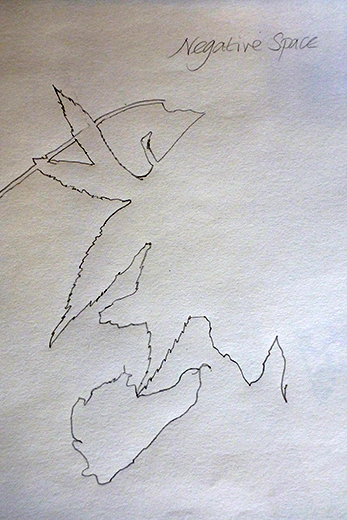
Negative space drawing
Observational drawing
After a cup of tea (I’m not totally inhumane) I ask them to do observational drawings, trying to include as much detail as possible. I encourage them to draw veins and leaf edges, and to use magnifying glasses. The quality of line in these illustrations is strong and bold. Several of them mentioned that they were using new ways of seeing from the negative space and contour excersizes.
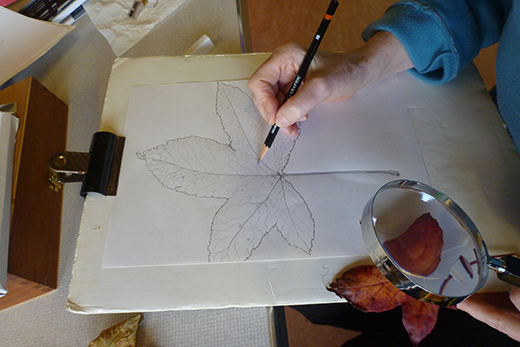
Observational drawing in progress
Tonality
Lunch came and went (most didn’t even stop to eat as they were so absorbed with their drawings) and then we discuss tonality and shadows. Shadows have definite shapes which need to be recorded, so I ask them to draw some curled leaves, focusing on recording the shapes of the shadows.
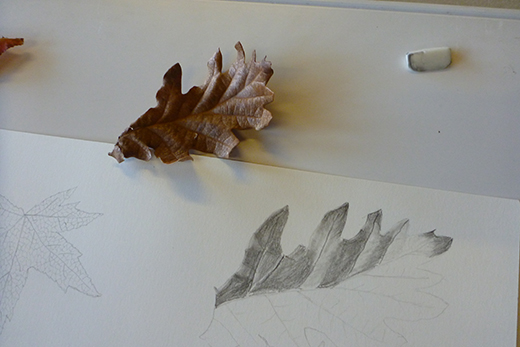
Botanical illustration workshop tonal drawing of Oak leaf
Interestingly, many seemed unwilling or unable to simplify the shadows to blocks of dark; and although they produce good work, it is less bold than their earlier pieces. Perhaps next time I’ll supply torches so the shadows are more distinct?
Using watercolour
For the last part of the class, and somewhat against my better judgement, they work with watercolour. I urge them to focus on drawing with paint rather than getting too involved with colour mixing, and to continue to think about shapes of shadows, negative space, and details of leaf venation. There were some good and strong results.
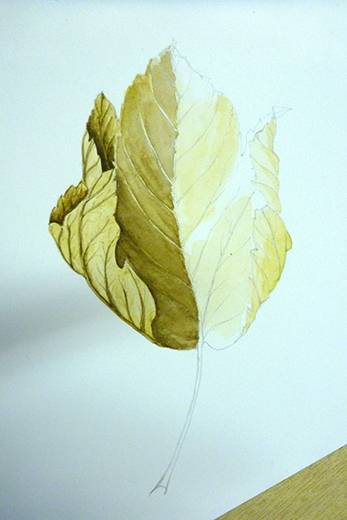
Botanical illustration watercolour study
When we looked at each others’ work, there was a general feeling that the “back-to-basics” approach had worked for them; loosened up their line and given them tools to allow them to see things differently. I feel that most, if not all, got something from the day; and many were planning to continue with the leaf studies at home.
For some more good tips on drawing and getting used to trying new drawing techniques, have a look at Jen Miller’s blog.
I’m just pleased the group didn’t object to being pushed out of their comfort zone or to being bullied by me. Although they didn’t have a polished finished piece at the end of the day, I hope the new approaches to drawing and seeing will have a longer-lasting impact, and will be something they can refer to again and again as they go forward with their botanical illustrations.


Just ordered Betty Edward’s book: Drawing On The Right Side Of The Brain. Thanks for suggestion. Would love to take a detailed tutorial on painting watercolored fall leaves. Do you teach such?
Oooh, I’m glad you ordered “Drawing on the Right Side of the Brian”. I love it. Alas, there’s too much illustration work on to do lots of teaching, although I’m very flattered. The closest I guess I can offer is the links I popped up in reply to your other comment. With negative space and drawing skills under control, getting the watercolour and depth right is easy. You could also check out the work of Julia Trickey and Sarah Morrish (Srah goes by the name of “Nature’s details”) both of whom, I think, offer online classes and may well cover autumn leaves. Thanks for the comments! x